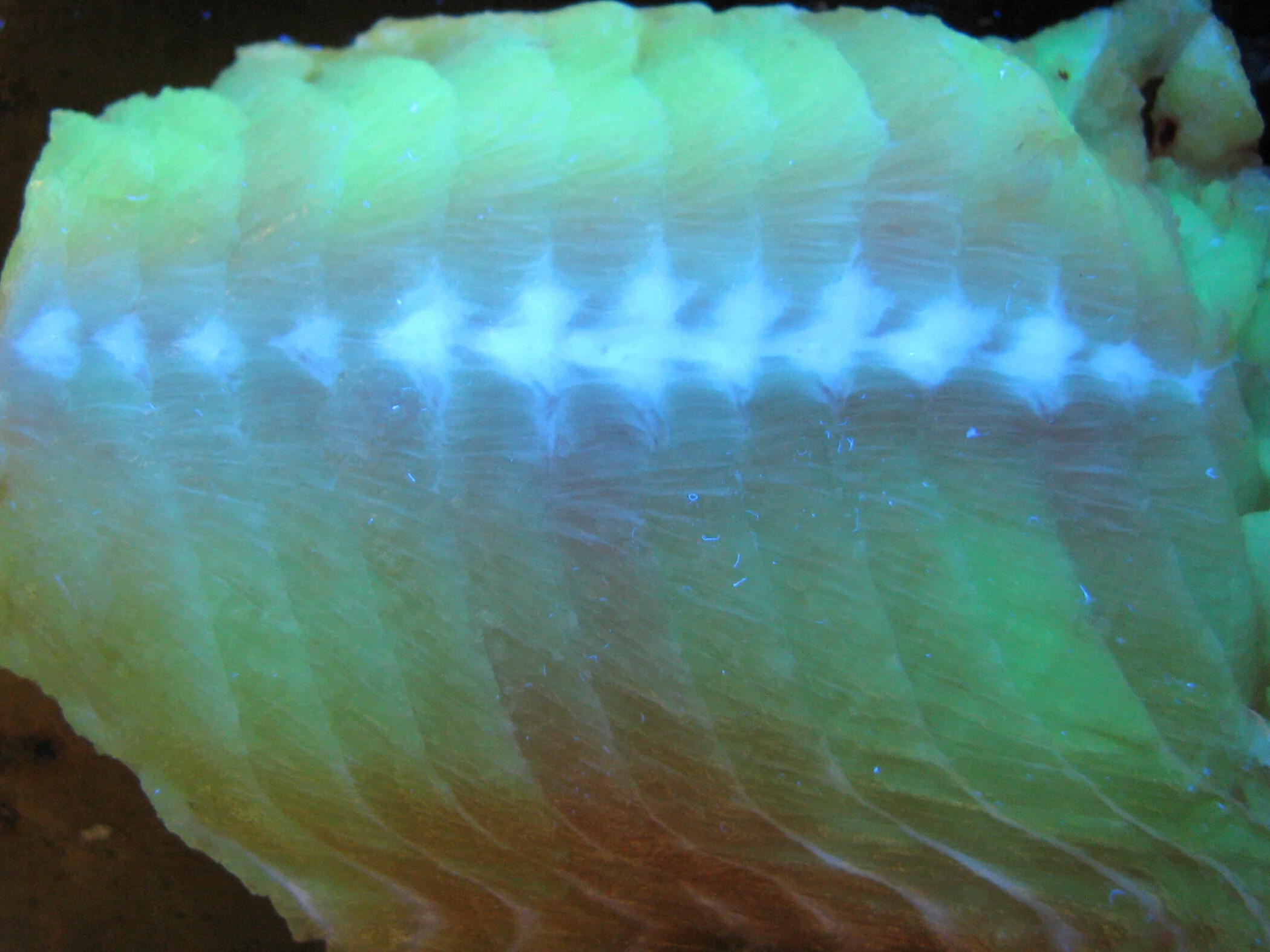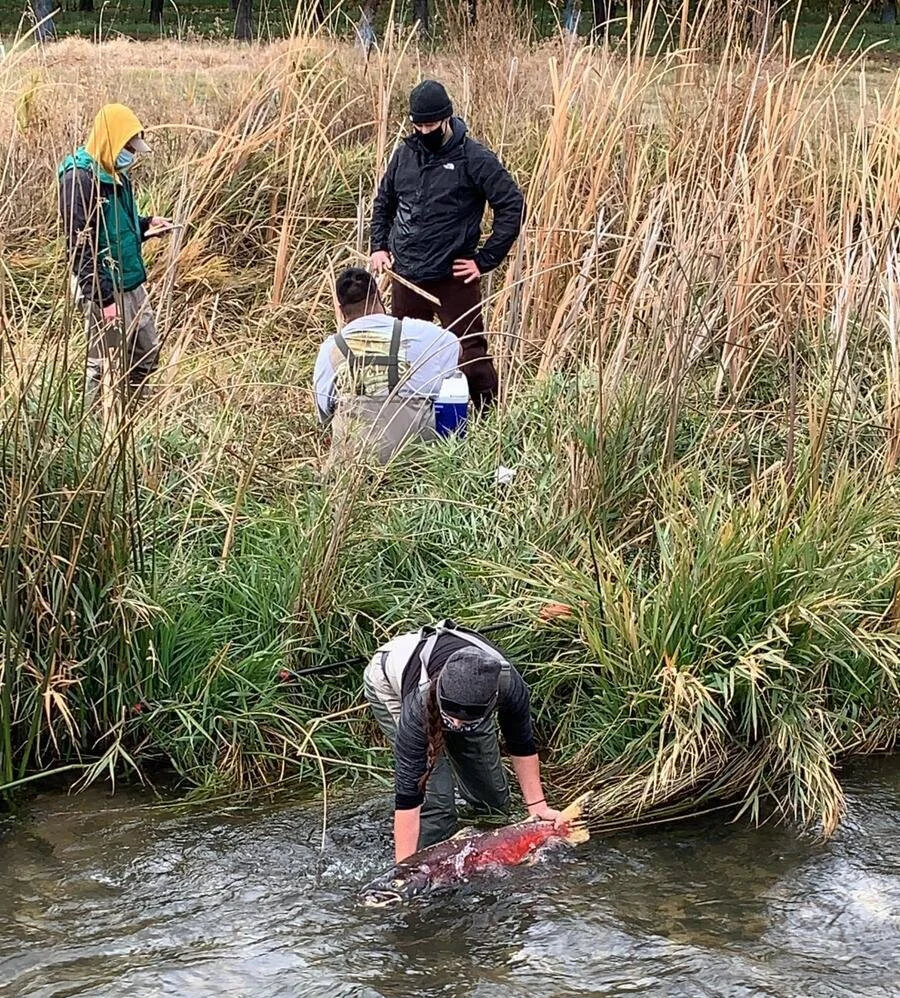Physiology, Genomics, and Ecology
Salmonid Skeletal Muscle Growth and Development
We are investigating the function of the activin/myostatin signaling pathway in rainbow trout. The activin pathway is an important regulator of many biological processes including skeletal muscle growth, reproduction and embryonic development. The lab is investigating the regulation of the pathway across tissues and muscle developmental stages to identify the genes and gene paralogs that coordinate singling in different tissues. We are also creating gene-edited model systems to study the function of key ligands, receptors, and inhibitors of the pathway.
Pink Salmon Maturation and Sexual Dimorphism
Pink salmon (Oncorhynchus gorbuscha) are unique among salmonid species in that they exhibit tight control of their reproductive maturation, reaching sexual maturity at 2 years of age. They also exhibit remarkable secondary sex characteristic that lead to the remodeling of skeletal muscle tissue to create large humps in males. We are interested in understanding how these physiological processes work by using gene expression profiling and functional studies in both wild and laboratory lines of pink salmon.
Pacific Spiny Dogfish Population Assessment
Pacific spiny dogfish, Squalus suckleyi, are a widely distributed shark species that are keystone species in temperate marine ecosystems. This sub-species branched away from Squalus acanthias, only a decade ago and there remains to be questions about their population structure and health. We are working with NOAA and WDFW in sample collection to investigate population structure and specific genetic markers that may influence evolutionary pressures for this sub-species.
Viral Disease Mechanisms
Viruses are arguably the most successful pathogen and have developed a vast array of biological mechanisms. Our lab is using CRISPR genome editing technology to identify the mechanisms by which viruses invade host cells. A major goal of this research is to identify strategies to increase disease resistance or produce novel antiviral therapies in cultured and wild fish.
Mechanisms of Thermal Tolerance in Chinook Salmon
Several salmonid species are threatend by the alarming increase in stream temperatures across their native range. Chinook salmon (Oncorhynchus tshawytscha) are one of the vulnerable species that have profound economic, ecological, and cultural significance. We are using natural warm water adapted populations of Chinook salmon to understand the physiological mechanisms of thermal tolerance in Chinook. Our research seeks to provide insight into how these iconic species may cope with future warming trends to provide fisheries managers with the tools to help preserve populations that are impacted by projected ecosystem changes.
Have a great idea and want to collaborate with our laboratory? Contact us: michael.phelps1@wsu.edu




